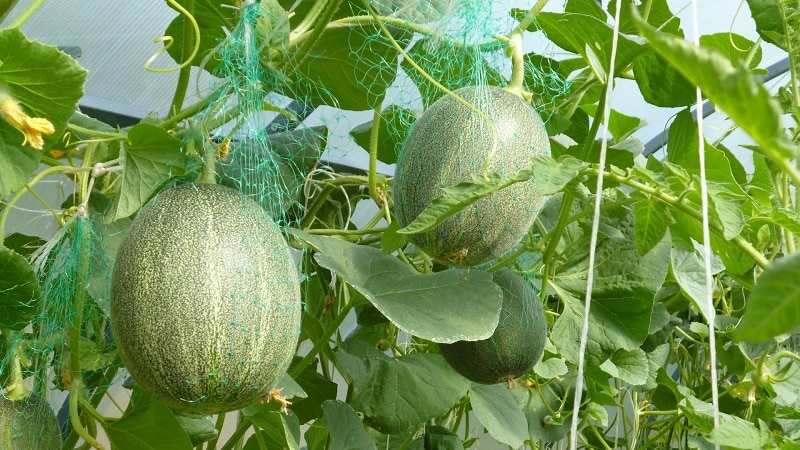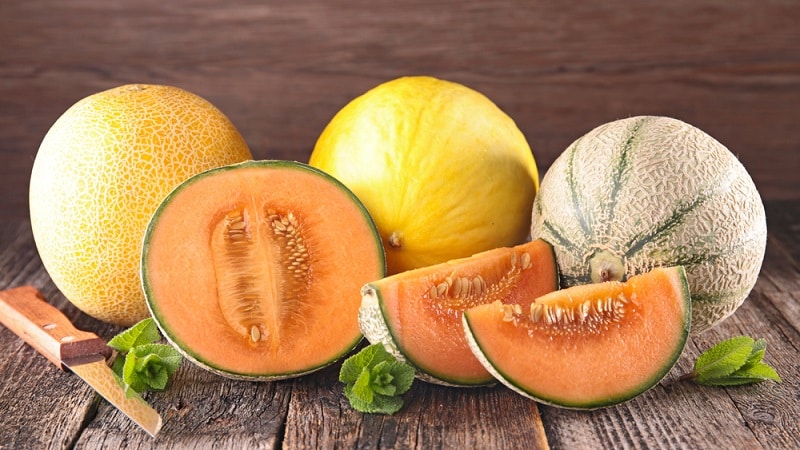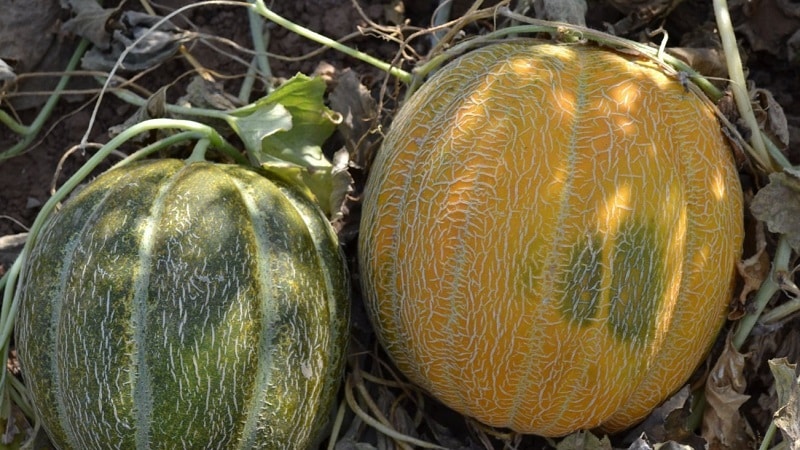When do melons ripen and how to correctly determine their degree of ripeness?
In August 2018, a Cantaloupe melon weighing 29.89 kg entered the Guinness Book of Records. The record holder from the United States looked appetizing, although she had uneven coloring.
In the vastness of Russia, fruits do not reach such sizes, but with some effort, you can grow sweet and tasty fruits here too. In this article we will find out when melons ripen and what parameters influence this.
How long does it take for a melon to ripen?
The ripening period of this heat-loving crop lasts from 45 to 100 days.
What determines the rate of aging?
The ripening period of melon depends on the climate, varietal characteristics and growing conditions.
In the Krasnodar Territory, melon can ripen right in the field in mid-July, but in Siberia they begin to enjoy the aromatic product grown indoors only in August.
 In hot summers, ripeness may occur a week earlier than the date indicated in the instructions. But if the spring was cold and the summer was cool and rainy, then the crop will take longer to ripen or will deteriorate.
In hot summers, ripeness may occur a week earlier than the date indicated in the instructions. But if the spring was cold and the summer was cool and rainy, then the crop will take longer to ripen or will deteriorate.
But even in an ideal climate for these fruits, the period of ripeness largely depends on the growing technology (irrigation regime, fertilization, formation and rationing, etc.).
When do melons ripen?
When growing melon on their plot, gardeners know approximately how long it takes for the fruit of this plant to ripen. However, accurate ripening period depends on many factors.
Variety
The variety of melon varieties allows you to choose the right one for any region. They are:
- early ripening - ripen in July;
- mid-season - ready for consumption in August;
- late-ripening - harvested in September.
Region
In the southern regions, melons grow well in the fields, and the early varieties begin to be harvested there already in mid-summer.
In the middle zone, melons ripen later. Mostly early-ripening and not too large-fruited varieties are planted here.
The further north you go, the smaller the weight of the fruits will be, and the less sweet they will be.. After all, this melon crop needs a lot of sun and warmth to acquire a rich taste and aroma.

When growing melons in cold regions, it is important to fulfill three conditions:
- Protect from late frosts in the spring and properly form the plant.
- Limit the number of fruits set (so that one melon grows on one vine).
- Carry out repeated feedings to accelerate growth (every 7-10 days).
Growing in a greenhouse
Seedlings are transplanted into greenhouses in late April - early May. The harvest ripens in 2-3 months, depending on the variety and microclimate. By providing suitable conditions in the greenhouse and making an effort, you can get juicy and aromatic fruits even in Siberia.
Open ground
In temperate climates, seedlings in open ground planted at the end of May - the first ten days of June, when there is no threat of frost. In this case, the harvest often has to be harvested unripe in August and left to ripen at home.
In the south, melon is harvested from fields and gardens when fully ripe from July to September (depending on the varieties planted).
How to tell if a melon is ripe

In one bed, melon fruits of the same variety can ripen at different times. That’s why it’s so important to be able to determine their ripeness.
First, calculate the approximate ripening time (according to the instructions on the bag of seeds), then visually observe the development of the fruits in the beds.
Methods and criteria for determining maturity
How to tell the ripeness of a melon? Pay attention to these signs:
- Characteristic fragrant aroma. Ripe vegetables have a distinct honey, pear or vanilla smell. Unripe specimens have no aroma. And overripe melon pulp does not smell very pleasant.
- Appearance. The peel should be elastic and have a uniform color characteristic of a particular variety. When inspecting, make sure that the fruit has no mechanical damage, multi-colored spots or rotten areas.
- When pressed the peel of a ripe fruit is slightly springy (no dent remains on the surface).
- Tapping sound. If you tap the sides and hear a dull sound, then the melon is ripe. An unripe one will have a ringing sound.
- The fruit is easily separated from the stalk, which dries out by the time it ripens.
Advice from experienced summer residents
In order for melons to grow into a beautiful shape and ripen faster, the formed green fruits are turned over in the beds from time to time. With such uniform sunlight, the peel acquires a uniform color on all sides.

Sugar content and juiciness will be imparted to melons by timely feeding. Half of the norm of nitrogen fertilizers is applied at sowing, and the second part - when the fourth true leaf appears.
It is optimal to pick ripe melon fruits in the morning, before the heat starts, or late in the evening.
Winter or mid-late varieties are harvested at the stage of technical ripeness. During storage, they gradually ripen, while their taste and aroma improve significantly.
When growing melons for sale, you should not collect them at the stage of biological ripeness, because they will quickly deteriorate during transportation. For transportation, slightly unripe specimens are selected, while preserving the stalk.
Early varieties are picked fully ripe and immediately eaten - are stored they are no more than a week old.
Conclusion
If you take into account the factors on which the rate of ripening depends and follow the rules for cultivating melons, you can get a sweet melon harvest even in the middle zone of our country. And the degree of ripeness can be easily checked by aroma, uniform color, elastic skin and dull sound when patting the selected melons.